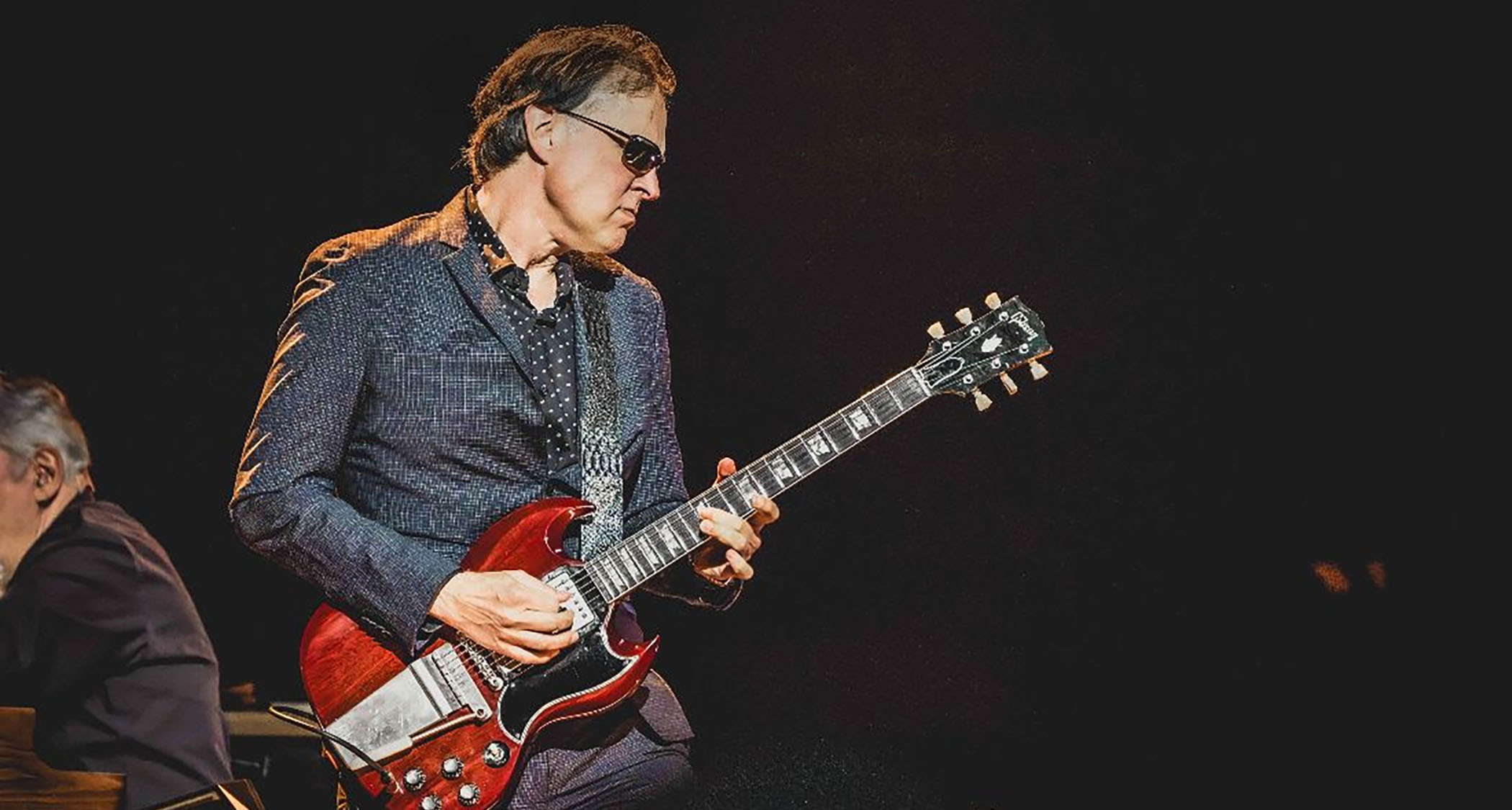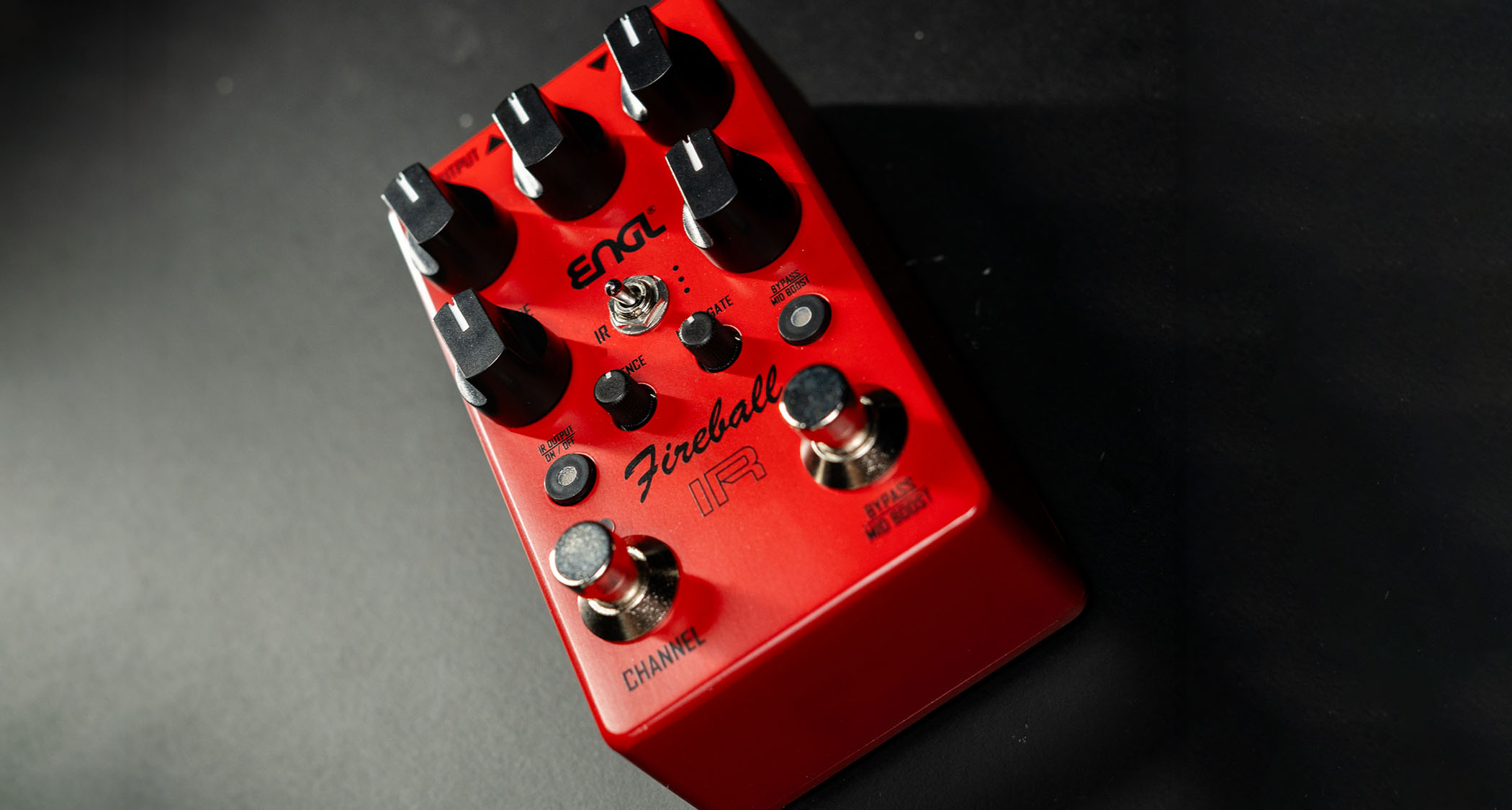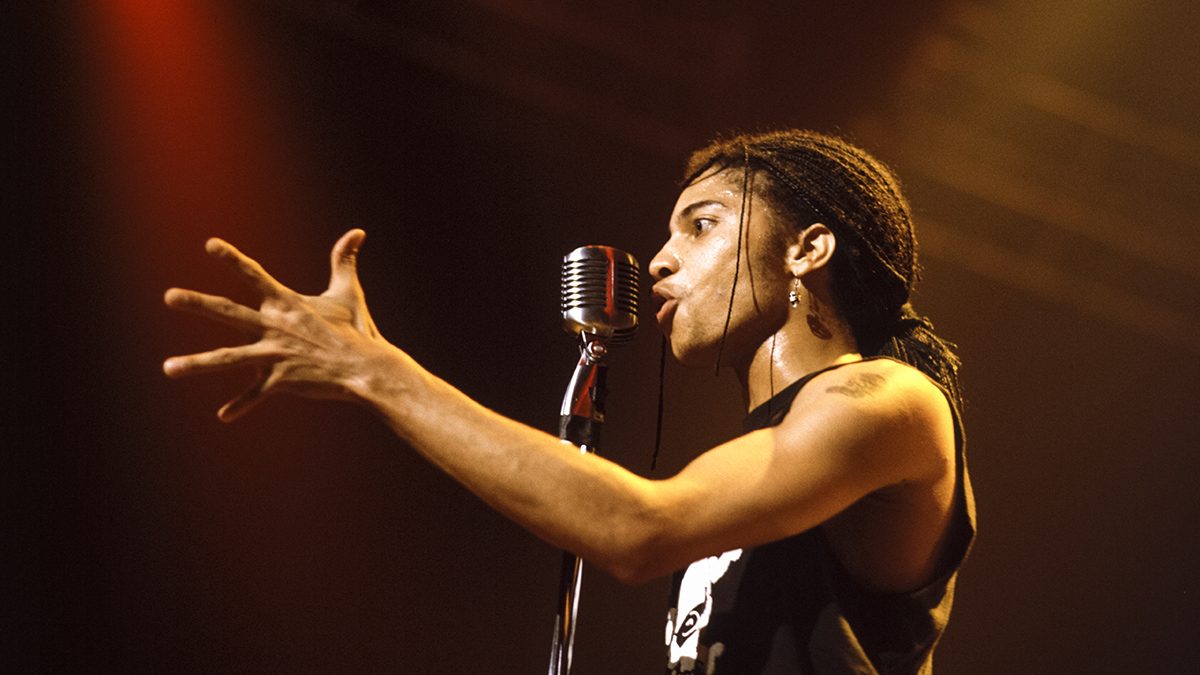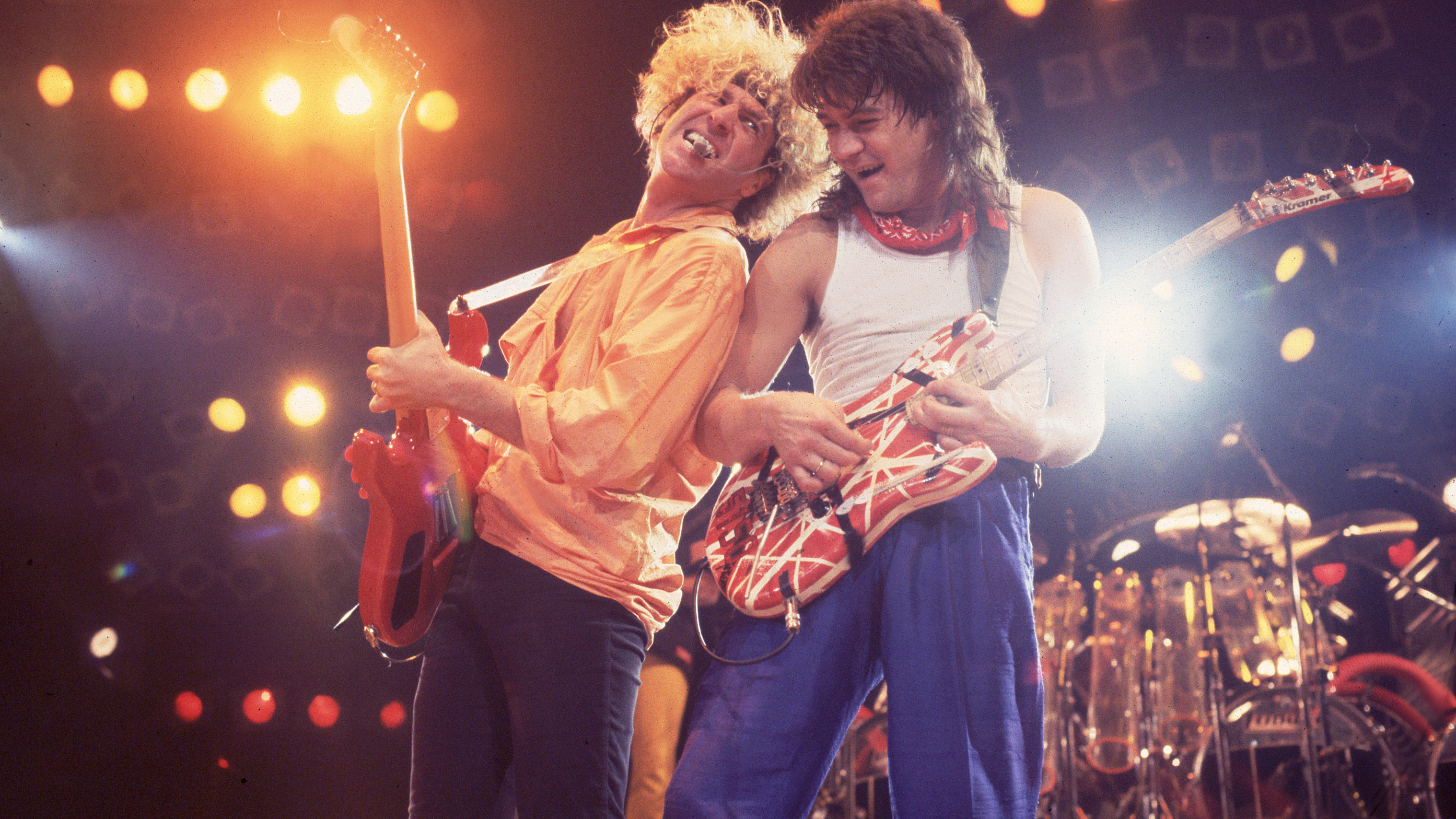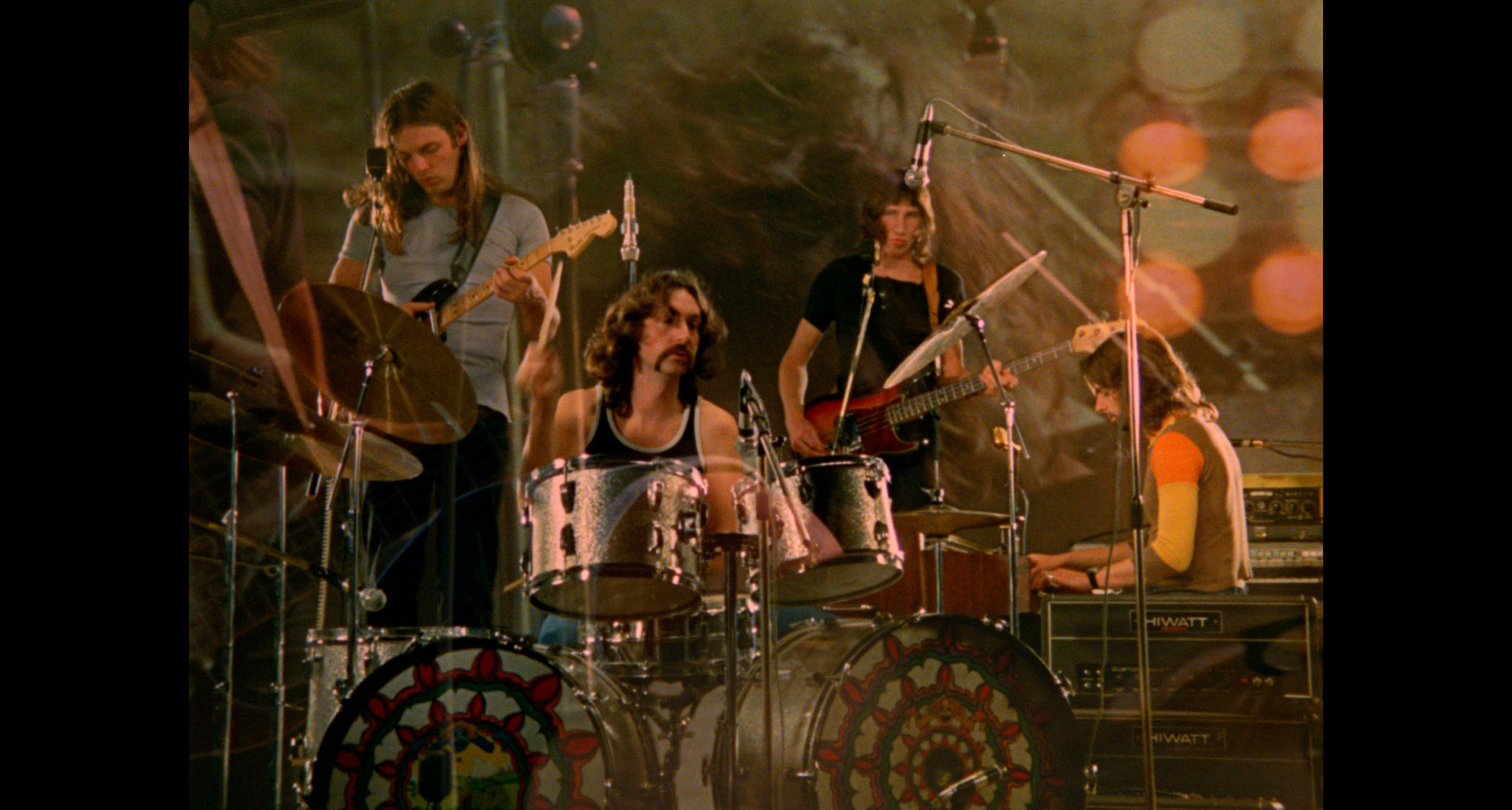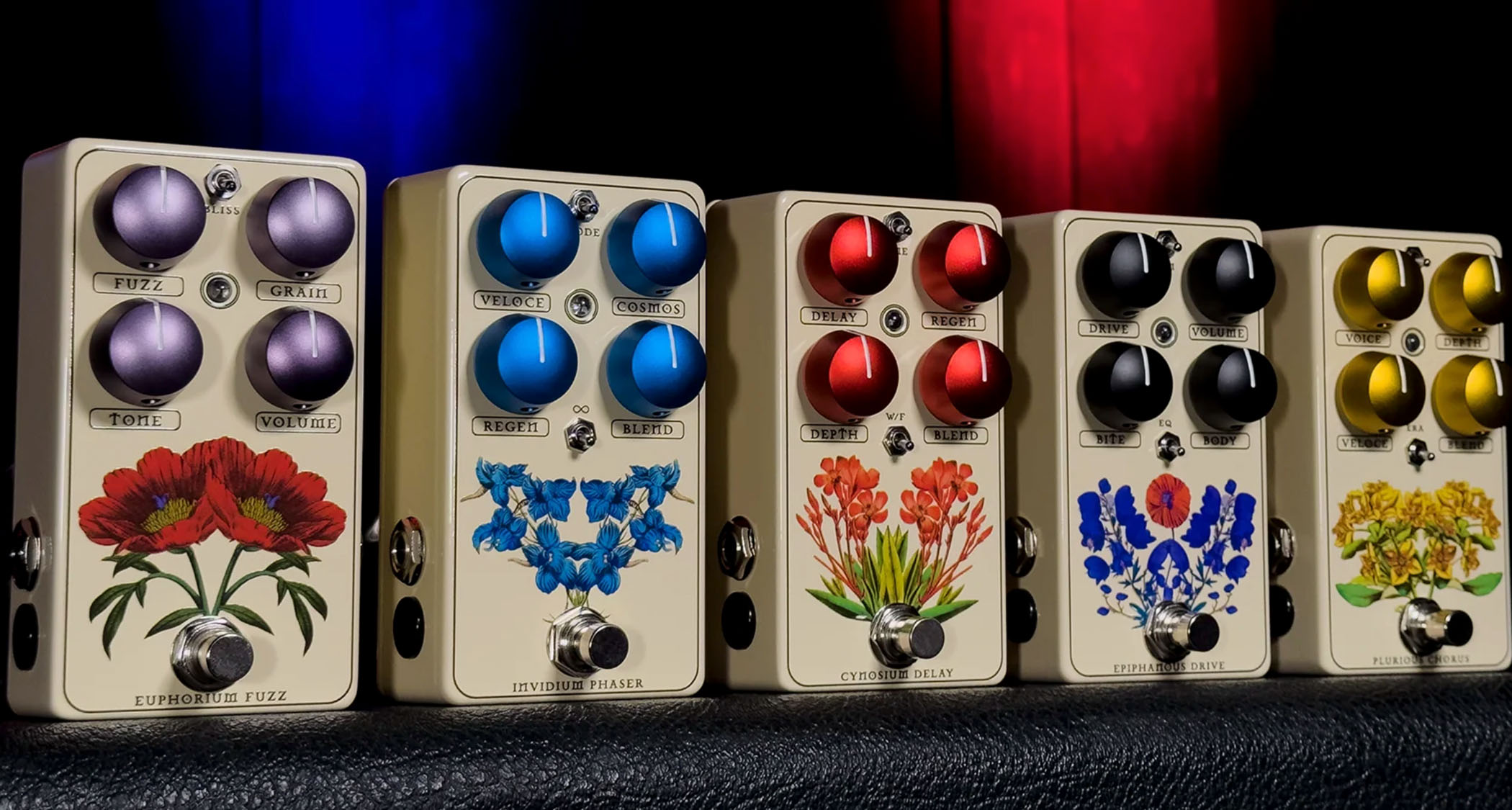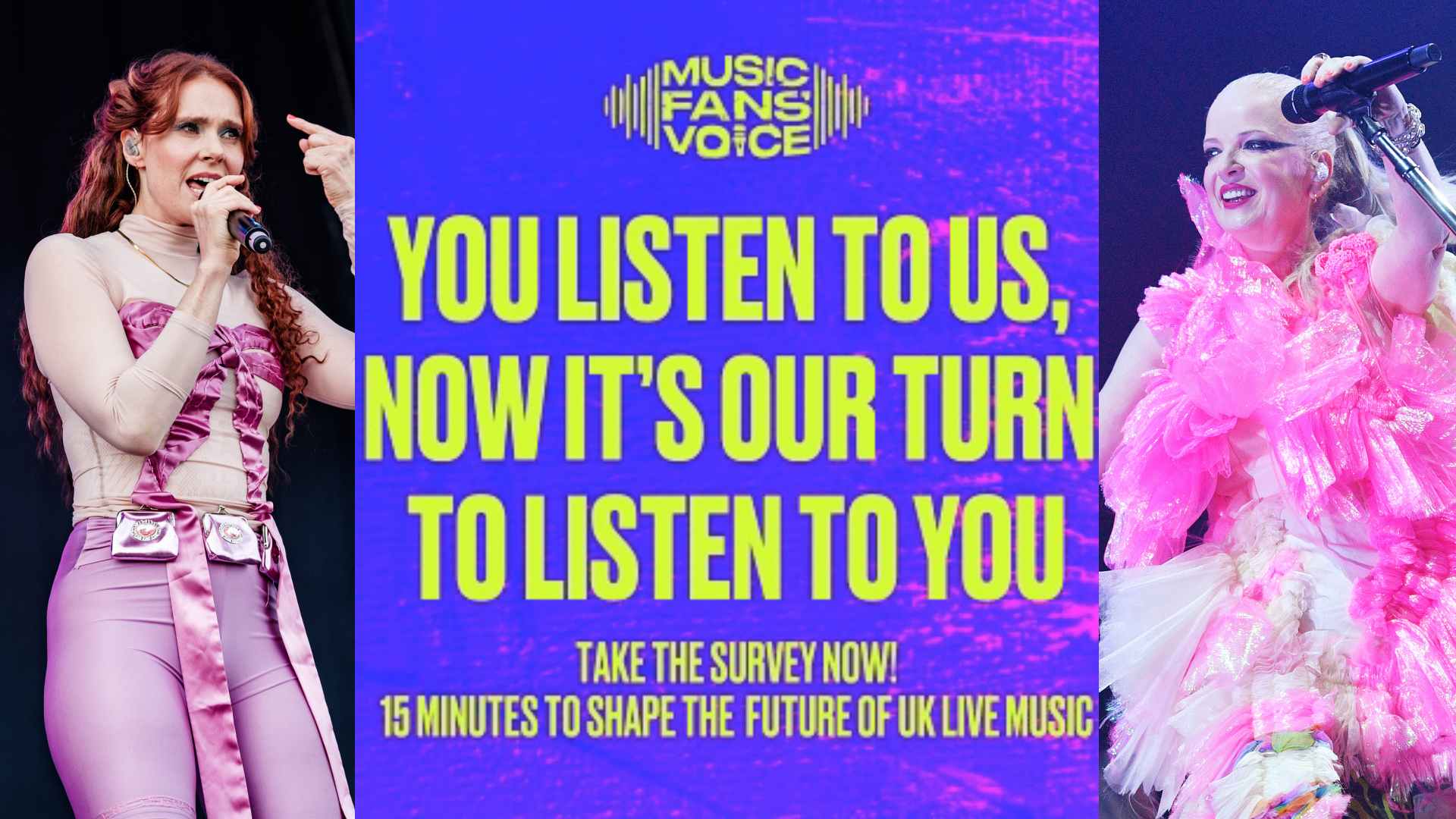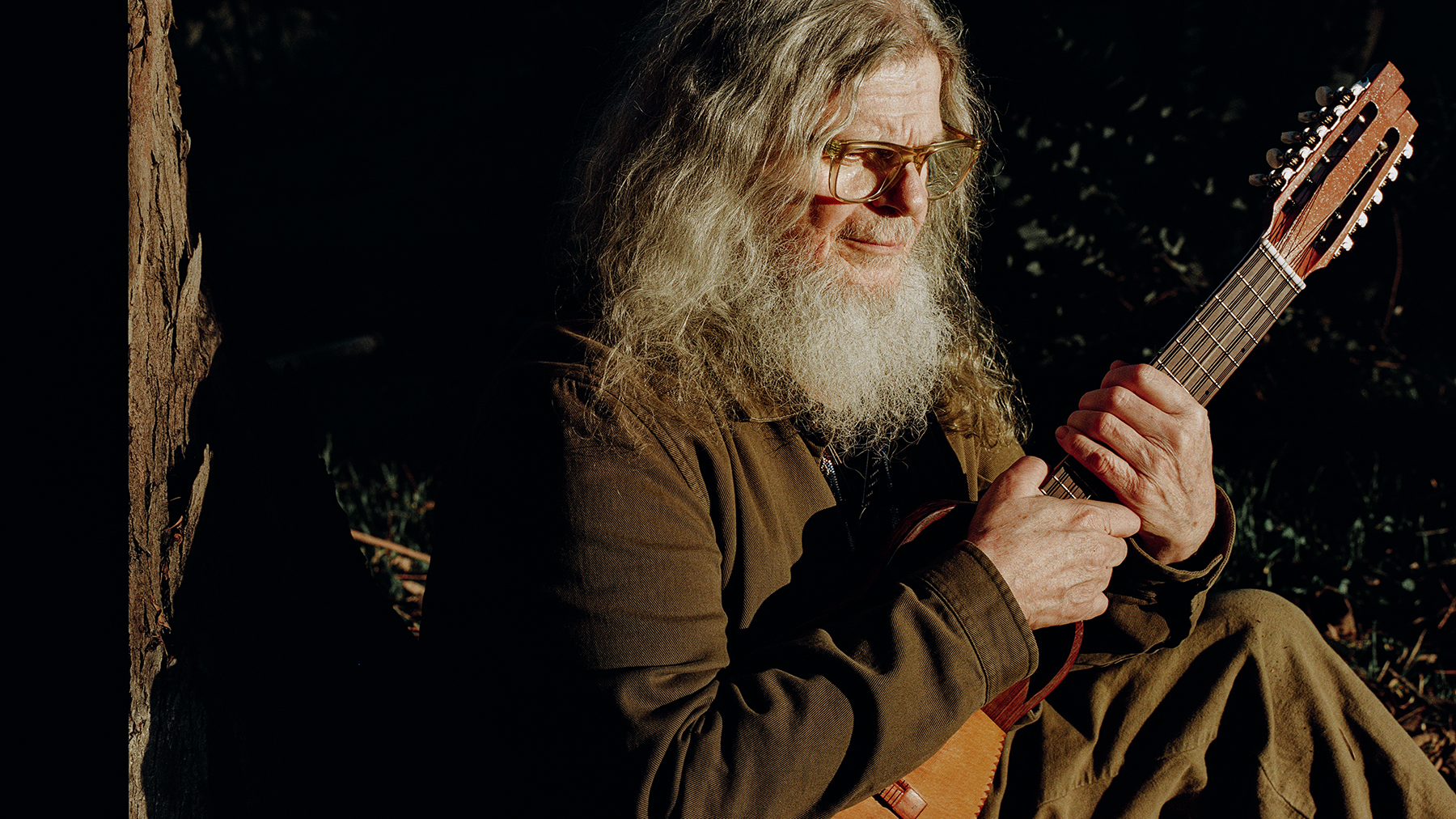Nabihah Iqbal talks creative strategies and incense sticks
In discarding the Throwing Shade moniker to embrace her acoustic influences, the rising producer has penned a captivating and accomplished debut album that has its own sound and even its own smell!
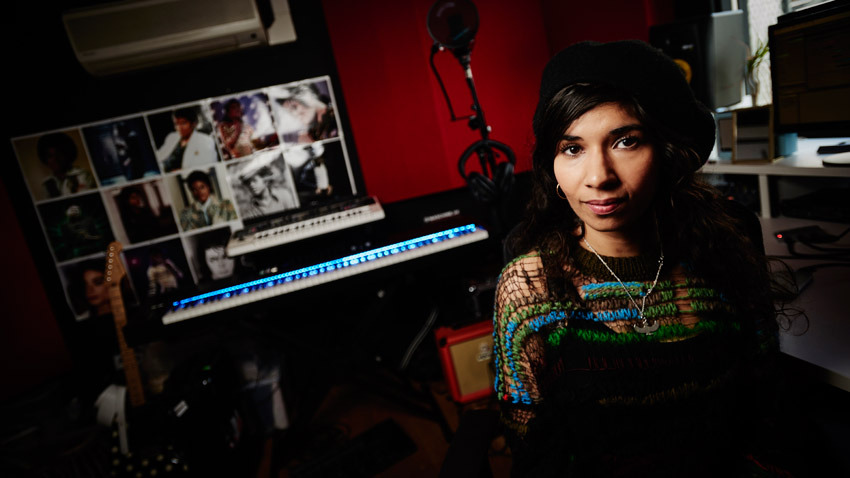
Few artists have the confidence to rip up the rule book when they’ve just started to establish themselves, but Nabihah Iqbal’s change of course feels like a seminal moment for the confident British Asian producer. In 2013, German label Ominira signed Iqbal’s savvy electronic pop/R&B moniker Throwing Shade, which darted from label to label until electronic indie giant Ninja Tune pounced.
With a debut album in the offing, and inspired by an impressionable army of admirers from her bi-weekly show on NTS Radio, Iqbal discarded the mask that Throwing Shade symbolised. Entering the studio with a completely open mind, the young producer was suddenly surprised to find herself joining the dots between past and future. Iqbal plays every instrument on Weighing of the Heart, a multi-sensory debut album where modern electronics mesh seamlessly with her post-punk influences.
Luckily for her, she’d also found the perfect location to evolve her newfound direction - the studio she’d hired belonged to Damon Albarn of Blur fame, and granted her access to both an extensive amount of gear and the talents of mixing engineer Stephen Sedgwick, who had only recently finished mixing the Gorillaz album, Humanz.
How early in life did you first become interested in making music?
“Music’s always been my favourite thing and I’ve always played music as well as listening to it. At school, I started with the recorder [laughs], but I took it really seriously. I was in a recorder ensemble and trained in three different kinds of recorder. I know it’s probably not that cool, but I didn’t care. I also played flute, piano and guitar, and used to go to music school in South London. The first time I tried to make my own music was probably when I was 13 or 14 and more into playing guitar. When I was 18, I did my first music production course, where I learned how to use a computer to make music.
“My friends used to put on parties around London while we were at university, and I used to DJ there and make tracks as well. When Soundcloud came about, I posted my music on there, but obviously didn’t think anybody would listen to it. It was picked up in 2013 by a German label called Ominira, which is owned by this really cool techno producer called Kassem Mosse. That year, I started presenting my own show on NTS radio as well, which gave me a good platform. It’s based in Dalston and they broadcast all around the world, so lots of people found me through that station.”
You took a degree in Ethnomusicology - how did that help you in the practical sphere?
Get the MusicRadar Newsletter
Want all the hottest music and gear news, reviews, deals, features and more, direct to your inbox? Sign up here.
“The basis of my radio show comes from the time I spent studying Ethnomusicology as an undergraduate at the School of Oriental and African Studies (SOAS). That was the first time I’d ever been exposed to this huge, never-ending range of music from all different parts of the world, like Gamelan, which is Indonesian percussive music, Siberian throat singing, Ugandan court music, sub-Saharan African music and Thai music. All of that really opened my eyes. And the music archive at SOAS is insane - you can’t find that stuff online anywhere, so I burnt a lot of the CDs including rare field recordings made by people like Hugh Tracey. My main performance instrument was the sitar, which I’d chosen to learn throughout my degree, but I never use the phrase ‘world’ music. It’s so Euro-centric and you’re clumping 99% of the world’s culture under one term. I’m so enthusiastic about music and just want to share it.”
As a young Asian female, you’ve previously cited M.I.A. as an influence, but would you say that, in your case, that’s more down to what she represents than the music itself?
“Definitely. She’s one of my favourite contemporary female artists. She operates in a slightly different field from me, but I just admire her so much for coming up through the ranks to now being recognised as a world superstar. I like how she’s really vocal and uses her platform to put a spotlight on other causes. She obviously came to this country as a refugee, so it’s inspiring to hear her talking about the political situation in Sri Lanka and the refugee crisis in a way that’s creative but not in bad taste.”
When did you start experimenting with electronic music technology?
“The first time I really started to get interested was when I was 18 and took this week-long course in music production at the University of the Arts London. That was my first experience of working with music in the context of electronics and computing. I realised that this was a really tactile way to build up a song and record music easily at home. I was learning Cubase during the course, but although it was useful, I’ve never used it since. After that, I was just playing around with GarageBand, and I bought a cheap microphone and started recording different samples and acoustic instruments. It was all pretty lo-fi.”
What made you decide to ditch the Throwing Shade moniker and release your debut album under your own name?
“I chose Throwing Shade for fun when I was DJing at university. At that time, I had no idea I would pursue music as a career, so it stuck with me. Now I’m thinking more about the future and how I want to be recognised, so it feels right to use my real name. I know that I’m occupying this position in a field where I’m really the minority. Being female is the first category I fall into in a male-dominated industry, but I’m also Asian and I’ve got a brown face. I’ve been getting loads of messages over the last few years from ethnic minority people saying they feel really inspired by what I’m doing, and I never thought people would reach out to me in that way, but people from my background don’t have a lot of similar faces to look up to.”
Could you relate to them feeling that way?
“If you’ve got a name that’s foreign and you’re living in English society, then even using your own name is a strong statement. I always used to get really anxious when a teacher was getting to my name in the register because I knew they were going to get it wrong, and funnily, I was getting all those same feelings again when I thought about the name change, which is strange because I’m usually quite confident in who I am.”
Since discarding Throwing Shade, it sounds like your love of post-punk bands like The Cure, Joy Division and Cocteau Twins is much more prominent now?
“Everyone says Cocteau Twins. They’re definitely all bands that influenced me when I was younger, but I didn’t think about those influences consciously. When I came into the studio to start working on the album, the only thing I was conscious about was not trying to sound too much like anything. I feel like that there’s too much contemporary electronic music where, as soon as you hear it, it sounds like something else - you can see through it immediately. So I didn’t listen to any music when I was working and just wanted to incorporate more guitar and live instrumentation to make songs, rather than leftfield ambient experimental stuff.
“When the songs started taking shape, all those subconscious influences came in from the bands I was listening to as a teenager: I was obsessed with The Cure, The Smiths, Joy Division and Bauhaus. Oh, my God, I loved Bauhaus. On the album, Saw You Twice is probably one of the more 80s-sounding tracks, because of all the guitar effects. The 1980s was when the world of electronic music met the guitar music world for the first time. Even people like Jimi Hendrix were pioneering pedal effects, and with my music, which is predominantly electronic anyway, when I’m incorporating guitar, I like adding in loads of effects and harking back to that age when the music sounded amazing.”
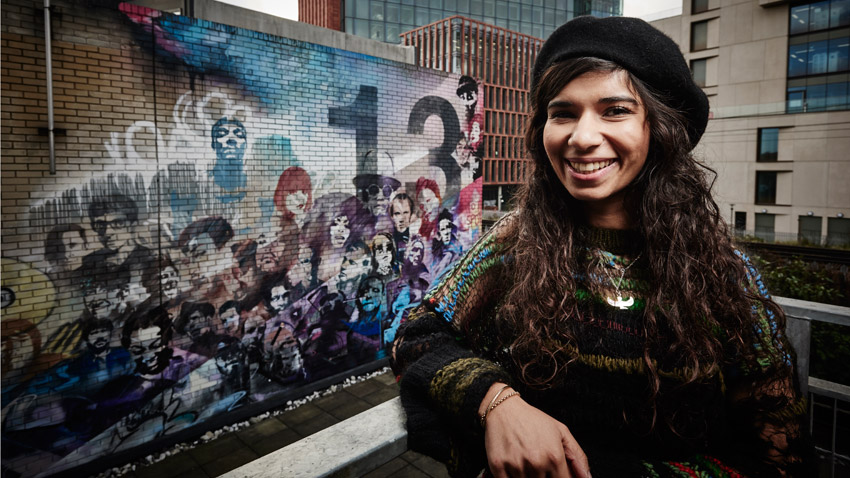
You’re selling incense with the album?
“Yeah, when I was in Australia, my friends gave me this packet of Japanese incense and it smelt so nice that I was burning it throughout the whole time I was recording. You know how sometimes you associate certain sounds with specific feelings? The same goes with this, because I really associate that smell with the whole process of writing and recording this album. Eventually, I managed to set up a collaboration with the incense makers in Tokyo and we’ve got these special packets that are going to be sold with special edition copies of the vinyl. You can burn it, put the music on and be transported into my world.”
Is it right that you hired this studio space with support from the PRS Foundation?
“Last year, I applied for the Momentum fund, because they have funding schemes for up-and-coming musicians who need help to take the next step. I was so happy that it was successful, because when they gave me the grant it meant for the first time ever I could afford to rent a studio. I was looking around and, luckily, found this spot. Basically, I put a post on Instagram and someone who works here followed me and that’s how it all happened.”
So you had no idea that this place you were hiring belonged to Damon Albarn?
“On the day I moved in, he was outside. It was a hot day and he was helping me take all my gear out of my crappy car. It was so weird that Damon was taking synths from the back of my Mazda 323. He works here, but there’s a lot of room for other people to come in and it’s nice that he rents out these smaller studios.”
The lyrics on tracks like Zone 1 to 6000 sound quite existential. Did the lyrics inform the music or vice versa?
“I’m not naturally a songwriter/vocalist, so the music always comes first for me. But I really pushed myself to try and write lyrics and songs this time, and I want to carry on exploring words with music. I think music and vocals are two powerful forces that should work in tandem, but for the first time I was exploring how you can enhance the feelings and emotions that were being conveyed by adding lyrical content. I still feel the music I make is quite emotive and atmospheric without lyrics, and I’ll always want it to be that way.”
The guitar plays a heavy role…
“The guitar is probably my favourite instrument and it’s fun to play. Over the last 18 months, I’ve been incorporating it into the live show even though it’s not featured in any of the music up until now. I don’t use a laptop when I play live, and I think the audience respond better when they see you playing something and it’s more interactive. I liked how I could marry guitar with the electronic soundscapes I was creating and really wanted to get in the studio and start making music that was more focused on guitar.”
You often play the guitar more melodically, with the keyboards acting more supplementally…
“Yeah, the way I play guitar is definitely more melodic than just strumming chords. It’s a Fender Stratocaster - the Buddy Guy limited edition version, hence the polka dots. There’s only a couple of tracks where I’m playing chords, but it’s more about creating melodies and harmonies, interlocking parts and layering all of them up together, which is going to make it harder to play live. Sometimes I’ll write with guitar, sometimes keys, or I’ll make a beat. There’s no particular way of doing things, and I don’t have a bass guitar, so I’ll either play a bassline on the guitar and pitch it down or use a soft synth.”
The guitar also sounds quite heavily processed…
“For the production side - writing and recording - I’ll use plugins, particularly Native Instruments’ Guitar Rig. It’s basically a virtual pedal board, but the sound quality is incredible. It’s very true to life and doesn’t sound synthesised at all. The possibilities are endless because there are hundreds of presets, but you can build your own sounds and choose what kind of amp, mic or space you’re operating in when it comes to reverb, delays and distortion.”
Is the Boss effects pedal primarily for live work?
“There’s also a bunch of pedals in the studio downstairs, which is the good thing about being in a building where everybody’s got so much gear. Although you can watch loads of YouTube reviews or tutorials, it’s not the same as trying stuff out in person. The Boss has lots of different components that help you to create the kind of sound you want. Obviously, it’s got preamp, EQ and compression, but you can also work with overdrive, distortion, modulation and delay. Last week, I was going through each track on the record, looking at the effects I’m using in Guitar Rig and recreating them on the Boss.”
There’s also a bunch of pedals in the studio downstairs, which is the good thing about being in a building where everybody’s got so much gear. Although you can watch loads of YouTube reviews or tutorials, it’s not the same as trying stuff out in person.
You also use NI’s Komplete Kontrol keyboard. Do you use it purely as a controller, or in tandem with the software?
“What I love about it is that the keys are weighted, so it feels like a piano. As you say, you can play it as a MIDI keyboard, so you don’t have to use it with the software, but the best way to use it is within the Komplete Kontrol software, because it suddenly becomes way more expansive. You can set what scale you want, for example, like a Gamelan scale or from a completely different musical tradition, and it will set the notes for you. Also, if you’re browsing through different synth sounds, you can do it all from the keyboard and don’t even have to touch the computer. For me that’s more fun - especially if you’re in the studio for a long time.”
And likewise, you prefer using hardware to software when creating beats.
“Yes, I’ll show you the Alesis drum machine. It’s quite an old one, the SR-16, and it’s got a very 80s sound, which is probably why my record sounds that way, too. It’s super old-school and lo-fi and reminds me of early Joy Division, because they always used a cheap-sounding drum machine. I also used a Korg Volca sampler, because it’s designed in a way that’s quite fun to play around with and I don’t like to read instruction manuals. It’s got a sequencer, so I can build up beats in a live setting, too. These are the two main things I used for drums and percussion on the record, apart from claps and maracas.”
How do the Maschine Studio and Maschine Jam work together?
“It takes a bit of time to understand how they work, but once you get the hang of it, they’re so nice to use. I’m using Maschine Jam more at the moment. You can use it as a sequencer or record it in real time using the pads. It has a huge library of samples, but it’s a great way to work out a drum pattern or other instruments in step mode, or for adding some extra bass and kick drums. Native Instruments have been really supportive. I worked with them last year, giving a guest lecture at one of their sessions and I’ve done some demos for them, too.”
And you have a few other hardware effects bits and pieces?
“Yeah, I have a Universal Audio Apollo audio interface - although I mostly used the MOTU Ultralite to plug the guitar and microphone through - but the mixing process was actually done in the studio downstairs on a 70-channel desk in a proper control room with loads of outboard equipment.”
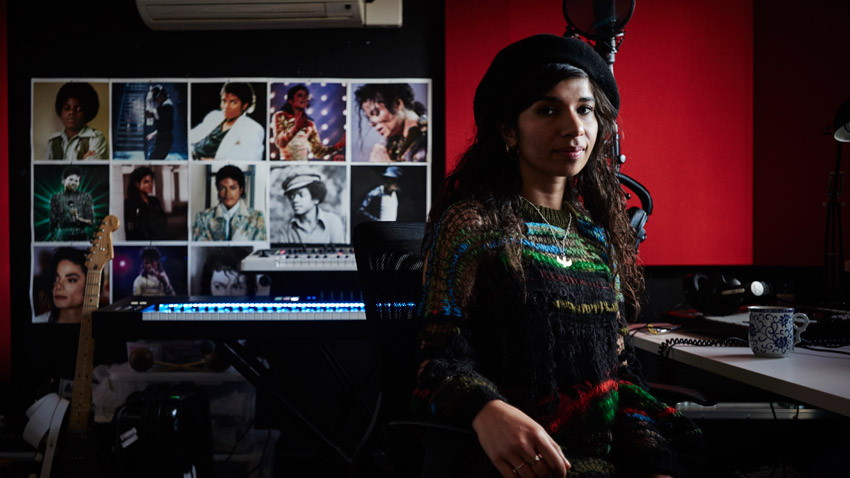
It was mixed by Stephen Sedgwick of Gorillaz fame. Was this your first time working with someone highly experienced in mixing?
“For me, it was the most amazing experience, because he is one of the best at what he does and it was the first time I’d actually mixed my music in a studio like that. We’d be working on each of the tracks, and throughout the course of the day I’d get to see them transform from the beginning of the session to the end. There’s no way you can get the same results using digital plugins; it seems to sound much more profound. When you’re tweaking the EQ and compression, or whatever effect you’re using, it feels like everything you’re doing is really expanding the sound much more and making it bigger. It just made me appreciate using analogue outboard equipment so much more - I don’t think I’ll mix my record in any other way in the future.”
How did you get Stephen onboard? Presumably he didn’t come as part of the studio package…
“I had to hire him too [laughs]. At first, it started out with me asking him for his opinion on my music. I was getting to a stage where the tracks were done, production-wise, and reaching the mixing phase. When someone like Stephen listens to music, he’ll be listening on a different level to me, just because of his experience and expertise. He said he’d be happy to work on it if I wanted him to. I learned so much just sitting with him. When you’re looking at someone at work who is so good at what they do, you can really absorb a lot.”
Weighing of the Heart is out now on Ninja Tune.


Future Music is the number one magazine for today's producers. Packed with technique and technology we'll help you make great new music. All-access artist interviews, in-depth gear reviews, essential production tutorials and much more. Every marvellous monthly edition features reliable reviews of the latest and greatest hardware and software technology and techniques, unparalleled advice, in-depth interviews, sensational free samples and so much more to improve the experience and outcome of your music-making.
"There had to be some sort of telepathy going on because I've never seen spontaneous inspiration happen at that level”: The genius of Eric Clapton's controversial masterpiece, Layla
"I said, ‘What’s that?!’ He looked at me strange and said, ‘We’re line checking. We’ll be gone in five minutes’. I said, ‘You won’t - meet me in that room in 10 minutes’": How a happy synth accident inspired a US number 1 single for Terence Trent D’Arby

